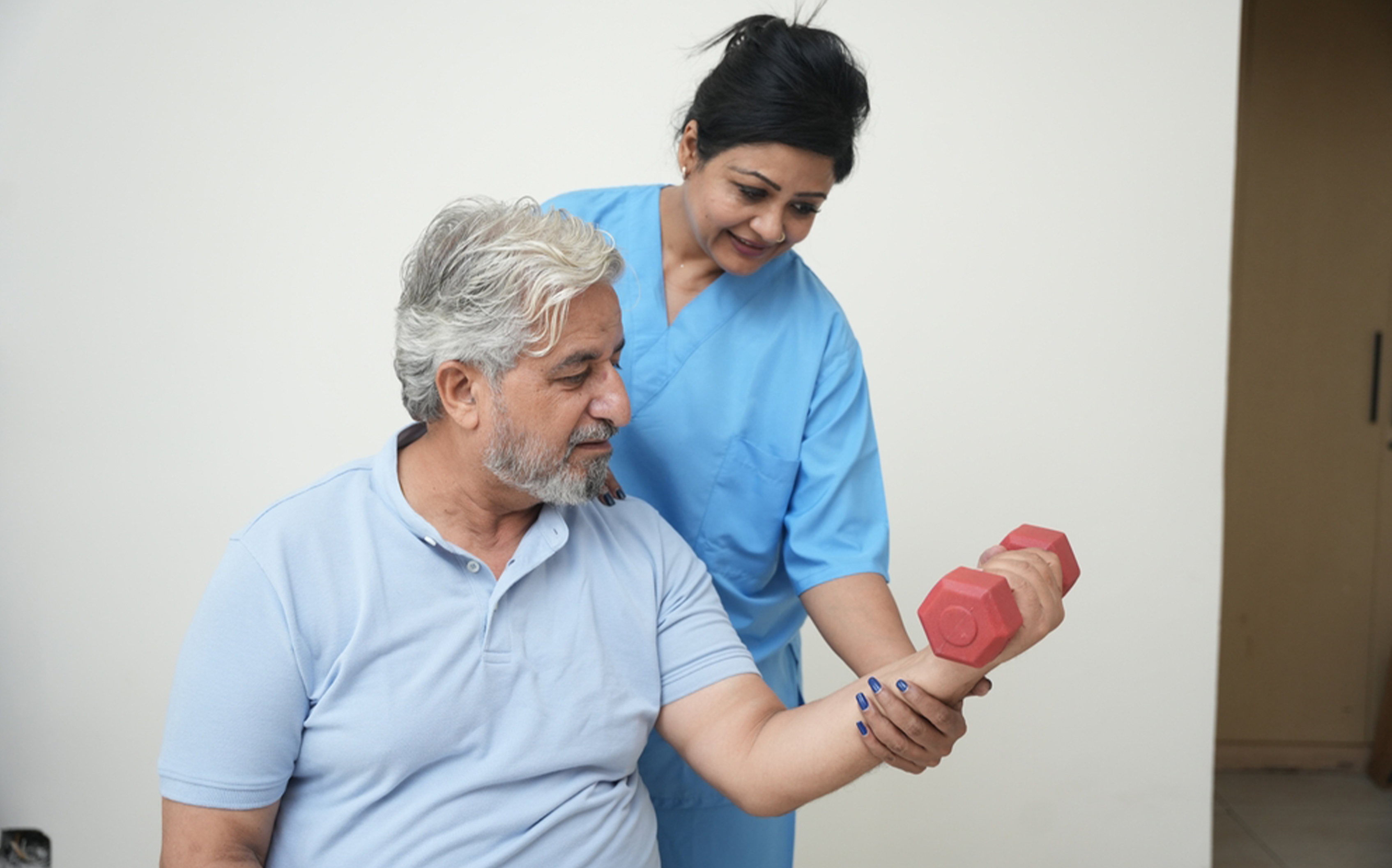
Think of Neurological Rehabilitation (or Neurotherapy) as restoring the CPU of a computer, while Physiotherapy is more like repairing its other parts.
One helps in retraining the CPU of the body (i.e brain and spinal cord) to guide the body back to function, while the other works on fixing or strengthening the body’s mechanics so you can move better.
That’s the basic difference between Physiotherapy and Neurological Rehabilitation.
Want to dig in deeper?
Read this Complete Guide to Know the Difference: Physiotherapy vs Neurotherapy.
Know about Physiotherapy first.
Physiotherapy = Strengthening your body through movement, exercise, and physical techniques.
Physiotherapy, commonly known as physical therapy, is a branch of medical science that focuses on restoring physical mobility, strength, and overall body function. This is a non-invasive and drug-free approach. It combines the principles of biomechanics (knowledge of biological systems), kinesiology (movement science), and rehabilitation techniques to help the body recover naturally.
Physiotherapy is for an individual struggling with mobility issues or functional limitations due to injury, disease, ageing, or surgery.
It can be considered for the following conditions:
Neurotherapy = training the nervous system (CPU or “software”) to control the body more efficiently.
Neurological rehabilitation, known as neurotherapy, is a highly specialised form of physical therapy. It focuses on conditions affecting the software of the body, such as the brain, spinal cord, and nervous system.
Unlike general physiotherapy, which addresses the body’s muscles and joints, neurotherapy focuses on retraining the neural connection between the brain and the body. This therapy uses the principle of neuroplasticity, meaning helping the brain form new pathways
The treatment basically uses neurofeedback and neurostimulation or neuromodulation techniques:
Neurological rehabilitation is crucial for individuals who experience functional loss or disability because of nervous system damage.
It can be considered for the following conditions:
Here is your quick takeaway:
| Aspect | Physiotherapy | Neurotherapy |
| Focus | Focus on the hardware of the body (muscles, bones, joints) | Focuses on the software/CPU of the body (Brain, spinal cord, nervous system) |
| Goal | Regain mobility, strength, and flexibility | Reset the brain-body neural connection and regain lost neural functions |
| Techniques Applied | Exercises, manual therapy, hydrotherapy, acupuncture, etc. | Neurofeedback, brain-computer interface, deep brain stimulation, etc. |
| Problem Treated | Musculoskeletal injuries, post-surgery recovery, arthritis, sports injuries | Stroke, Parkinson’s, spinal cord injury, traumatic brain injury, multiple sclerosis |
| End Benefit | Pain reduction, improved strength, and enhanced physical performance | Regaining independence in daily tasks, improved coordination, and better brain function |
Choose physiotherapy if you are facing issues with muscles, joints, or post-surgery recovery.
Consider neurotherapy if the problems are due to the brain, spinal cord, or nervous system.
Note: Your doctor will guide you with a customised plan based on your condition.
Yes, both techniques can be combined for better recovery, especially in complex cases.
However, your neurologist or specialist will decide the right combination for you.
Understanding the difference between physiotherapy and neuro rehab helps you choose the right care for your condition. With this clarity, you can confidently discuss all the available treatment options with your doctor. For personalised, advanced recovery plans, consider reaching out to a trusted rehab centre like Walk Again.
Book an Appointment
Call Us09035030623